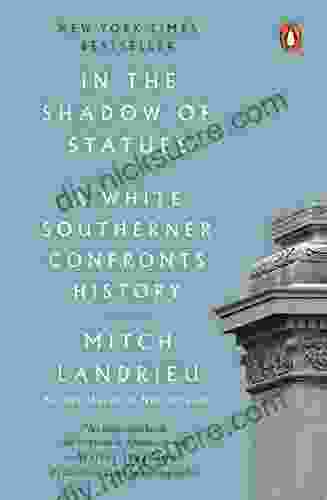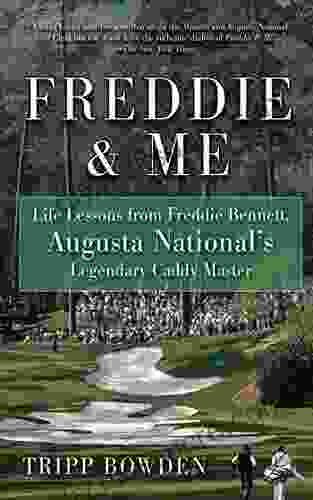In the Shadow of Statues: Exploring the Complex Legacy of Public Monuments

Public monuments have long been used to commemorate historical figures and events. They stand as symbols of power, pride, and remembrance, shaping public memory and serving as focal points for civic gatherings. However, these monuments can also be controversial, sparking debates about their historical accuracy, political significance, and potential to perpetuate oppression.
4.6 out of 5
| Language | : | English |
| File size | : | 1455 KB |
| Text-to-Speech | : | Enabled |
| Screen Reader | : | Supported |
| Enhanced typesetting | : | Enabled |
| X-Ray | : | Enabled |
| Word Wise | : | Enabled |
| Print length | : | 236 pages |
In recent years, there has been a growing movement to reconsider the role of public monuments, particularly those that glorify figures associated with colonialism, racism, and other forms of injustice. Protests and demonstrations have called for the removal of these monuments, while counter-protests have sought to preserve them as historical artifacts. This has led to a complex and often heated debate about the purpose and meaning of public monuments in our society.
Monuments as Symbols of Power and Oppression
Public monuments have often been used to assert power and control over public spaces. They can serve as reminders of the dominance of a particular group or ideology, and can be used to intimidate or suppress dissent. For example, statues of Confederate generals in the United States have been seen as symbols of white supremacy and the Lost Cause myth, while monuments to Christopher Columbus have been criticized for their glorification of colonialism and its associated violence.
The placement of monuments in public spaces is also significant. By choosing to erect a monument in a prominent location, authorities can send a message about the values and beliefs that they hold dear. For example, the placement of a statue of Cecil Rhodes at the University of Oxford has been seen as a celebration of colonialism and imperialism, while the removal of a statue of John A. Macdonald from Victoria Park in Halifax has been welcomed as a step towards reconciliation with Indigenous communities.
Monuments as Sites of Contested Memory
Public monuments are not simply passive objects. They are active sites of contested memory, where different groups struggle to shape the narrative of history. Monuments can be reinterpreted and repurposed over time, as new perspectives and understandings emerge. For example, the Vietnam Veterans Memorial in Washington, D.C., was initially controversial but has since become a powerful symbol of remembrance and healing.
The debate over the removal of Confederate monuments in the United States is a case in point. Supporters of removal argue that these monuments are symbols of racism and white supremacy, while opponents argue that they are historical artifacts that should be preserved. This debate highlights the contested nature of public memory and the difficulty of reaching consensus on how to commemorate the past.
Moving Forward
The debate over public monuments is not likely to end any time soon. However, it is important to engage in these debates in a respectful and informed way. It is essential to consider the multiple perspectives on public monuments and to recognize their complex legacy. By ng so, we can create public spaces that are more inclusive and representative of our diverse society.
Here are some key considerations for moving forward:
- Contextualization: Provide historical context for monuments, explaining the circumstances in which they were created and their intended meaning. This can help people to understand the different perspectives on the monument and its significance.
- Reinterpretation: Reinterpret monuments in light of new research and understanding. This can involve adding plaques or other materials that provide additional information or challenge the existing narrative.
- Removal: In some cases, it may be necessary to remove monuments that are particularly offensive or harmful. This should be done in a respectful and inclusive way, and with consideration for the impact on different communities.
By engaging in these debates in a constructive way, we can create public spaces that are more inclusive and representative of our diverse society.
4.6 out of 5
| Language | : | English |
| File size | : | 1455 KB |
| Text-to-Speech | : | Enabled |
| Screen Reader | : | Supported |
| Enhanced typesetting | : | Enabled |
| X-Ray | : | Enabled |
| Word Wise | : | Enabled |
| Print length | : | 236 pages |
Do you want to contribute by writing guest posts on this blog?
Please contact us and send us a resume of previous articles that you have written.
 Fiction
Fiction Non Fiction
Non Fiction Romance
Romance Mystery
Mystery Thriller
Thriller SciFi
SciFi Fantasy
Fantasy Horror
Horror Biography
Biography Selfhelp
Selfhelp Business
Business History
History Classics
Classics Poetry
Poetry Childrens
Childrens Young Adult
Young Adult Educational
Educational Cooking
Cooking Travel
Travel Lifestyle
Lifestyle Spirituality
Spirituality Health
Health Fitness
Fitness Technology
Technology Science
Science Arts
Arts Crafts
Crafts DIY
DIY Gardening
Gardening Petcare
Petcare Sarah Jo Brown
Sarah Jo Brown Sadie Robertson Huff
Sadie Robertson Huff Michael Dell
Michael Dell Anne Deans
Anne Deans Sean Skahan
Sean Skahan Heather Anderson
Heather Anderson Mia Kankimaki
Mia Kankimaki Jane Austen
Jane Austen Rekha Ramcharan
Rekha Ramcharan Tammara Webber
Tammara Webber Lou Tabory
Lou Tabory Christopher Small
Christopher Small A G Howard
A G Howard Sergey Kosarevsky
Sergey Kosarevsky Aaron Kleinmeyer
Aaron Kleinmeyer Din Daniels
Din Daniels John Long
John Long Dan Limbaugh
Dan Limbaugh Alexander Greenmaj
Alexander Greenmaj Dale P Clemens
Dale P Clemens A M Wilson
A M Wilson Timothy J Gawne
Timothy J Gawne Joshua Akin
Joshua Akin Peter Rees
Peter Rees Frost Kay
Frost Kay James Baldwin
James Baldwin Matthew J Friedman
Matthew J Friedman Crystal Cestari
Crystal Cestari Gabrielle Coleman
Gabrielle Coleman Tsao Lin E Moy L Ac Msom
Tsao Lin E Moy L Ac Msom Eric Blehm
Eric Blehm A Roger Ekirch
A Roger Ekirch Tripp Bowden
Tripp Bowden Jamie Vardy
Jamie Vardy Okina Baba
Okina Baba Jack Grimshaw
Jack Grimshaw William Scott Wilson
William Scott Wilson Roy Richard Grinker
Roy Richard Grinker Laura Pohl
Laura Pohl Vernon Trafford
Vernon Trafford Heather Gudenkauf
Heather Gudenkauf A J Hamler
A J Hamler Richard Heath
Richard Heath Jon Gillespie Brown
Jon Gillespie Brown Gary Gruber
Gary GruberA G
 Cristian Salcescu
Cristian Salcescu A J Mackenzie
A J Mackenzie Jim Allen
Jim Allen Larit Levy
Larit Levy Dr Stephanie Bloodworth Psyd
Dr Stephanie Bloodworth Psyd Alyssa Padgett
Alyssa Padgett Nick Jackson
Nick Jackson Freya Hoffmeister
Freya Hoffmeister Peter Shelton
Peter Shelton Lindsey Vonn
Lindsey Vonn Harrison Fluss
Harrison Fluss Sharie King
Sharie King Barbara J Bain
Barbara J Bain Don Fink
Don Fink Homeira Qaderi
Homeira Qaderi Lindsey Lapointe
Lindsey Lapointe Oba Ilari Aladokun
Oba Ilari Aladokun Jec Aristotle Ballou
Jec Aristotle Ballou George Francis Dow
George Francis Dow David A Wells
David A Wells Jonalu Johnstone
Jonalu Johnstone Jennifer Senior
Jennifer Senior Alison Cotter
Alison Cotter Francis Fukuyama
Francis Fukuyama Steven Raichlen
Steven Raichlen Ed Webster
Ed Webster Jennifer Longmore
Jennifer Longmore Brad K Chambers
Brad K Chambers Michael Lanza
Michael Lanza Stan Skinner
Stan Skinner Jennifer L Armentrout
Jennifer L Armentrout A H Almaas
A H Almaas W Timothy Gallwey
W Timothy Gallwey Lucy Christopher
Lucy Christopher Ken Alder
Ken Alder N J Enfield
N J Enfield Monte Burke
Monte Burke Susan Striker
Susan Striker Catherine Stonehouse
Catherine Stonehouse Katrina Abbott
Katrina Abbott Lillian Tibbles Phd
Lillian Tibbles Phd Patrick Meechan
Patrick Meechan Rosie Garthwaite
Rosie Garthwaite Linda Tuhiwai Smith
Linda Tuhiwai Smith Elisabeth Fassas
Elisabeth Fassas A J Stewart
A J Stewart Akash Kapur
Akash Kapur Stephen R Lawhead
Stephen R Lawhead Eric Sevareid
Eric Sevareid Sandra Swenson
Sandra Swenson Sam Warburton
Sam Warburton Adrian Dater
Adrian Dater Peter Nichols
Peter Nichols Timothy C Urdan
Timothy C Urdan Carrie Harper
Carrie Harper Val Mcdermid
Val Mcdermid Chris Diamond
Chris Diamond Anna Goldsworthy
Anna Goldsworthy Christiane Kutik
Christiane Kutik Sarah Sutton
Sarah Sutton Diane Stresing
Diane Stresing Corina Morariu
Corina Morariu Rachael Allen
Rachael Allen David Magee
David Magee Ridge Magee
Ridge Magee Bear Heart
Bear Heart Kerri Hummingbird Sami
Kerri Hummingbird Sami Jeff Kane
Jeff Kane Marks Prep
Marks Prep Angela Himsel
Angela Himsel Sherine Hamdy
Sherine Hamdy Russell Davis
Russell Davis Stan Tenen
Stan Tenen Abigail Burd Lcsw Pmh C
Abigail Burd Lcsw Pmh C Businessnews Publishing
Businessnews Publishing Pete Ripmaster
Pete Ripmaster Seth M Holmes
Seth M Holmes Eric Armstrong
Eric Armstrong E S Wynn
E S Wynn Jennie Finch
Jennie Finch Glenn Patron
Glenn Patron Peter Maas
Peter Maas Philip Golding
Philip Golding Val Emmich
Val Emmich Paul Watzlawick
Paul Watzlawick Kenneth Cloke
Kenneth Cloke Mitch Landrieu
Mitch Landrieu Michael D Coogan
Michael D Coogan Niall Ferguson
Niall Ferguson Sonya Chappell
Sonya Chappell Jonathan S Rose
Jonathan S Rose Erin Watt
Erin Watt Joe Navarro
Joe Navarro Linh Phung
Linh Phung A F Stewart
A F Stewart Todd Downs
Todd Downs Charles Szypszak
Charles Szypszak Bob Trueman
Bob Trueman Georgia Varozza
Georgia Varozza Lauren Oliver
Lauren Oliver Peter Godfrey Smith
Peter Godfrey Smith Polly Moore
Polly Moore Natalie Pompilio
Natalie Pompilio Tanya Selvaratnam
Tanya Selvaratnam John Almberg
John Almberg Kelly Starrett
Kelly Starrett Yasu
Yasu William F Mann
William F Mann Brian Clegg
Brian Clegg Rick Telander
Rick Telander Dr Tricia Groff
Dr Tricia Groff Manoush Zomorodi
Manoush Zomorodi Nancy Mckenzie
Nancy Mckenzie Saxton Pope
Saxton Pope Russell Sher
Russell Sher Arlin Smith
Arlin Smith Watt Key
Watt Key A K Davidson
A K Davidson Helen Buckley
Helen Buckley Leigh Newman
Leigh Newman Susan Cooper
Susan Cooper Lilin Yang
Lilin Yang Bree Moore
Bree Moore Boston T Party
Boston T Party Giordano Scalzo
Giordano Scalzo Jennifer Trainer Thompson
Jennifer Trainer Thompson Upton Sinclair
Upton Sinclair Eva Mauer
Eva Mauer Tiara R Brown
Tiara R Brown Mike Tidwell
Mike Tidwell Jim Vernes
Jim Vernes John L Parker Jr
John L Parker Jr Katerina Griffith
Katerina Griffith Dr Kevin Leman
Dr Kevin Leman Mandy Rivers
Mandy Rivers Garret Romaine
Garret Romaine Jonathan Eig
Jonathan Eig Shenyang Guo
Shenyang Guo A L Knorr
A L Knorr Anne Sigismund Huff
Anne Sigismund Huff Anji Andrews
Anji Andrews Zen Lylah
Zen Lylah Judi Garman
Judi Garman Andrew Henderson
Andrew Henderson Cynthia Ulrich Tobias
Cynthia Ulrich Tobias Todd Gitlin
Todd Gitlin David J Vanbergen Jr
David J Vanbergen Jr Chris I Naylor
Chris I Naylor William C Oakes
William C Oakes Rysa Walker
Rysa Walker Ken Dryden
Ken Dryden A J Carlisle
A J Carlisle Lilith Mclelland
Lilith Mclelland Leandro Taub
Leandro Taub Ryan Gray
Ryan Gray David G Taylor
David G Taylor Hazel Holmes
Hazel Holmes A G Cairns Smith
A G Cairns Smith David H Barlow
David H Barlow Harry Yoon
Harry Yoon A R Vasishtha
A R Vasishtha John Brenkus
John Brenkus Marc S Sabatine
Marc S Sabatine John Williams
John Williams Megan Vickers
Megan Vickers Noah Gift
Noah Gift Cathy A Malchiodi
Cathy A Malchiodi Gemma Milne
Gemma Milne King Solomon
King Solomon Shanterra Mcbride
Shanterra Mcbride Roxanne Martin
Roxanne Martin Anghel Leonard
Anghel Leonard Mj Porter
Mj Porter Marcus Butler
Marcus Butler Kevin Adams
Kevin Adams Joseph Mctaggart
Joseph Mctaggart William Minto
William Minto Ray Bradbury
Ray Bradbury Cassandra Clare
Cassandra Clare Michael Labossiere
Michael Labossiere Ari Tuckman
Ari Tuckman Matt Brown
Matt Brown Charles Edward Chapel
Charles Edward Chapel Dmv Test Bank
Dmv Test Bank Raymond J Carroll
Raymond J Carroll Alf Wilkinson
Alf Wilkinson A J Mackinnon
A J Mackinnon Lyndall Clipstone
Lyndall Clipstone Raymonde Carroll
Raymonde Carroll Paul Mccarthy
Paul Mccarthy Peter Zheutlin
Peter Zheutlin Jm Mason
Jm Mason Chuck Whelon
Chuck Whelon Mark Ryan
Mark Ryan Charles Butler
Charles Butler Fernanda Pirie
Fernanda Pirie Armin A Brott
Armin A Brott John Mordechai Gottman
John Mordechai Gottman Kenay Keira
Kenay Keira William Ramsey
William Ramsey Blair Holden
Blair Holden Joe Pepitone
Joe Pepitone Grady Hendrix
Grady Hendrix Certsquad Professional Trainers
Certsquad Professional Trainers Caspar Craven
Caspar Craven Ken Castor
Ken Castor Susanne Foitzik
Susanne Foitzik Dan Romanchik Kb6nu
Dan Romanchik Kb6nu Pintip Dunn
Pintip Dunn Iasha King
Iasha King Bruce Tremper
Bruce Tremper Amos Yong
Amos Yong Todd Wanerman
Todd Wanerman Taha Sochi
Taha Sochi Mike Branon
Mike Branon Vitaly Pedchenko
Vitaly Pedchenko Dale Dougherty
Dale Dougherty David Remnick
David Remnick Scott A Ostrow
Scott A Ostrow Matthieu Ricard
Matthieu Ricard Susan Aud Sonders
Susan Aud Sonders Rebecca Black
Rebecca Black Emily Evans
Emily Evans Catherine Rodgers
Catherine Rodgers K A Riley
K A Riley Thomas Hager
Thomas Hager Dane Huckelbridge
Dane Huckelbridge Mark Obmascik
Mark Obmascik Virginia Willis
Virginia Willis Byron Pitts
Byron Pitts Rafe Esquith
Rafe Esquith Roger Zelazny
Roger Zelazny Zen Faulkes
Zen Faulkes Chelsea Crockett
Chelsea Crockett Flo Perry
Flo Perry Olivia Smith
Olivia Smith Lisa Murphy
Lisa Murphy Micha Gorelick
Micha Gorelick Cyndi Kinney
Cyndi Kinney Bob Plager
Bob Plager Meghan Leahy
Meghan Leahy Jan Morris
Jan Morris Gordon Macquarrie
Gordon Macquarrie Andrea Falk
Andrea Falk Thomas R Martin
Thomas R Martin Thomas C Tabor
Thomas C Tabor Rebecca Pelky
Rebecca Pelky Dr Howard Rankin
Dr Howard Rankin Dame Darcy
Dame Darcy Valerio Varesi
Valerio Varesi Anthony J Onwuegbuzie
Anthony J Onwuegbuzie A J Messenger
A J Messenger Len Fisher
Len Fisher Diane Burke Fessler
Diane Burke Fessler Bill Jones
Bill Jones Karl Knopf
Karl Knopf Shauna Lynn Panczyszyn
Shauna Lynn Panczyszyn Barry Werth
Barry Werth Randy Friedman
Randy Friedman Jonathan Mckee
Jonathan Mckee Cath Smith
Cath Smith Jordan B Peterson
Jordan B Peterson Steve Hindman
Steve Hindman Christine Wheeler
Christine Wheeler Dave Lowry
Dave Lowry Dean R Johnson
Dean R Johnson Jose M Forero Bautista
Jose M Forero Bautista A J Angulo
A J Angulo Filippo Coarelli
Filippo Coarelli Bryan Berg
Bryan Berg Rina Kent
Rina Kent A L Graziadei
A L Graziadei Shelly Mazzanoble
Shelly Mazzanoble A M Strickland
A M Strickland Dirk F Moore
Dirk F Moore John L Messina
John L Messina Adam Savage
Adam Savage Soap2day Publication
Soap2day Publication Kenn Bivins
Kenn Bivins Sandra Niche
Sandra Niche Sherrilyn Kenyon
Sherrilyn Kenyon Marlynn Jayme Schotland
Marlynn Jayme Schotland Louis Jacques Dorais
Louis Jacques Dorais Nicole Conway
Nicole Conway Jamal Moustafaev
Jamal Moustafaev Francis Pryor
Francis Pryor Leslie Stager
Leslie Stager Michael Lardon
Michael Lardon The R A
The R A Eugene Don
Eugene Don Tom Jordan
Tom Jordan Loretta Sponsler
Loretta Sponsler David Spiegelhalter
David Spiegelhalter Joel David Hamkins
Joel David Hamkins Walter Dean Myers
Walter Dean Myers John D Currid
John D Currid William Bauer
William Bauer Lisa Pease
Lisa Pease Pardha S Pyla
Pardha S Pyla Steve Angers
Steve Angers John Halligan
John Halligan Raymond M Smullyan
Raymond M Smullyan Thomas Mcguane
Thomas Mcguane Amanda Ostrander
Amanda Ostrander Robert P Harris
Robert P Harris Kenneth Cline
Kenneth Cline Cailin O Connor
Cailin O Connor Mrjamvad
Mrjamvad Todd Rose
Todd Rose Eileen Tracy
Eileen Tracy Hicham And Mohamed Ibnalkadi
Hicham And Mohamed Ibnalkadi Josh Skeen
Josh Skeen Ilya Ru
Ilya Ru Helen E Johnson
Helen E Johnson Bruce Collier
Bruce Collier Lyla Lee
Lyla Lee Day Leitao
Day Leitao Scientia Media Group
Scientia Media Group Dawn Huebner
Dawn Huebner William Monk
William Monk Kathy Koch
Kathy Koch Dr Alan Whitcomb
Dr Alan Whitcomb Matilda Ramsay
Matilda Ramsay R A Mejia
R A Mejia Kathlyn Gay
Kathlyn Gay Helen Fitzgerald
Helen Fitzgerald Jean Philippe Dionne
Jean Philippe Dionne Zander Brumbaugh
Zander Brumbaugh Helen Marot
Helen Marot Lou Zambello
Lou Zambello Rens Bod
Rens Bod Tony Wright
Tony Wright Winston Starr
Winston Starr Ray Ordorica
Ray Ordorica Lauren Muhlheim
Lauren Muhlheim Bob Frye
Bob Frye Rebecca A Moyes
Rebecca A Moyes Michelle Maccarthy
Michelle Maccarthy Philip Yarrow
Philip Yarrow Andreas Quast
Andreas Quast Toni Natalie
Toni Natalie David Deutsch
David Deutsch Karla Helbert
Karla Helbert Daniel S Pierce
Daniel S Pierce Max Tegmark
Max Tegmark Remy Agee
Remy Agee Bruce Lansky
Bruce Lansky Calvin L Chou
Calvin L Chou Sky Marsen
Sky Marsen Michael Shingleton
Michael Shingleton Peter Goldenthal
Peter Goldenthal Alex Karp
Alex Karp Jennifer N Smith
Jennifer N Smith Tim Flanagan
Tim Flanagan
Light bulbAdvertise smarter! Our strategic ad space ensures maximum exposure. Reserve your spot today!

 Gene SimmonsEssential Principles of Business for CSEC 4th Edition: A Comprehensive Guide...
Gene SimmonsEssential Principles of Business for CSEC 4th Edition: A Comprehensive Guide... Gregory WoodsFollow ·9.8k
Gregory WoodsFollow ·9.8k Danny SimmonsFollow ·5.7k
Danny SimmonsFollow ·5.7k Pablo NerudaFollow ·6.1k
Pablo NerudaFollow ·6.1k Cooper BellFollow ·19.7k
Cooper BellFollow ·19.7k Julio Ramón RibeyroFollow ·6.7k
Julio Ramón RibeyroFollow ·6.7k Carlos DrummondFollow ·8.1k
Carlos DrummondFollow ·8.1k Curtis StewartFollow ·6k
Curtis StewartFollow ·6k Ethan GrayFollow ·4.2k
Ethan GrayFollow ·4.2k
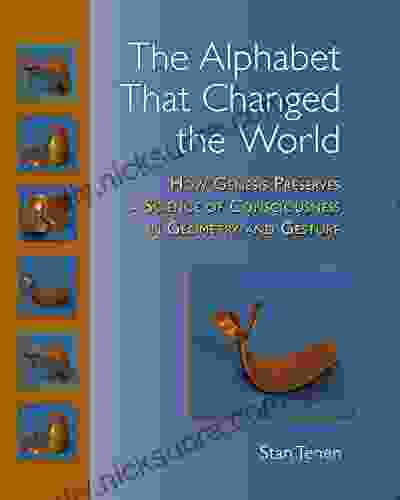
 Franklin Bell
Franklin BellHow Genesis Preserves Science Of Consciousness In...
The book of Genesis is...
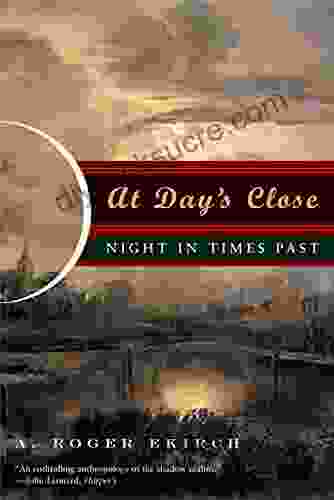
 Ted Simmons
Ted SimmonsAt Day's Close, Night in Times Past
As the sun dips...
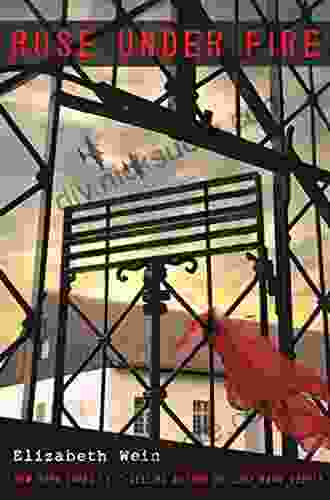
 Kenneth Parker
Kenneth ParkerRose Under Fire: Code Name Verity - A Heartbreaking and...
In the annals of...

 Jerry Hayes
Jerry HayesNurturing Massage for Pregnancy: A Comprehensive Guide to...
Pregnancy is...

 Blake Bell
Blake BellFill in the Blank: Word Kind of Animal Farm for Kids and...
This interactive fill-in-the-blank...
4.6 out of 5
| Language | : | English |
| File size | : | 1455 KB |
| Text-to-Speech | : | Enabled |
| Screen Reader | : | Supported |
| Enhanced typesetting | : | Enabled |
| X-Ray | : | Enabled |
| Word Wise | : | Enabled |
| Print length | : | 236 pages |


